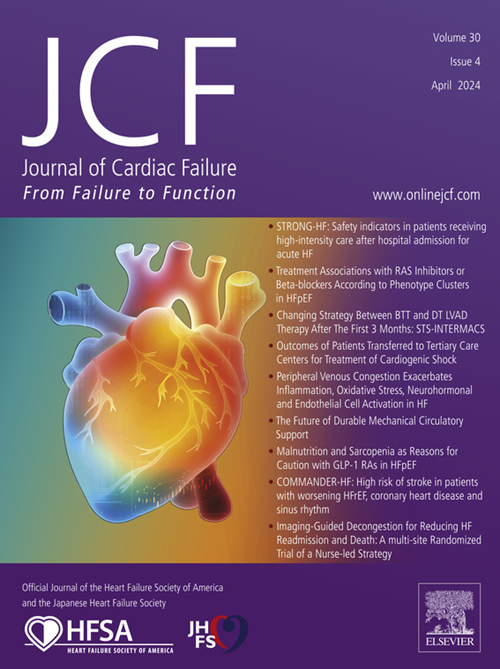ACORAMIDIS IMPROVES CLINICAL OUTCOMES IN PATIENTS WITH TRANSTHYRETIN AMYLOID CARDIOMYOPATHY: A POST HOC RECURRENT EVENT ANALYSIS OF ATTRIBUTE-CM STUDY
IF 6.7
2区 医学
Q1 CARDIAC & CARDIOVASCULAR SYSTEMS
引用次数: 0
Abstract
Background
Acoramidis is an investigational, next-generation, oral, near-complete stabilizer of transthyretin (TTR) for the treatment of transthyretin amyloid cardiomyopathy (ATTR-CM). The phase 3 ATTRibute-CM study demonstrated robust efficacy on clinical outcomes (all-cause mortality [ACM] and first cardiovascular hospitalization [CVH]) from 2 previously reported analyses: the 2-component, hierarchical Finkelstein-Schoenfeld method (p=0.0182) and the Cox proportional hazards model time to first event analysis (HR 0.645, p=0.0008). However, the previous models do not account for recurrent events. The objective of this post hoc reanalysis is to evaluate the overall effect of acoramidis vs placebo on the combination of ACM and all CVHs as recurrent events.
Methods
The Andersen-Gill (A-G) model is an extension of the Cox proportional hazards model that allows for handling recurrent events. In this analysis, the model was stratified by randomization stratification factors (genotype [ATTRm-CM vs ATTRwt-CM], baseline NT-proBNP level [≤3000 vs >3000], eGFR level [≥45 vs <45]), with treatment group, baseline 6-minute walk distance, and the number of events that occurred before a given interval included as covariates.
Results
Of 632 randomized patients, 611 were included in the A-G analysis (efficacy analysis population; acoramidis: 409; placebo: 202). ACM or CVH occurred in 147 (35.9%) and 102 (50.5%) of acoramidis and placebo-treated patients, respectively (Table). Patients treated with acoramidis also experienced fewer recurrent CVH or CVH and ACM events (14.4%) vs placebo (27.7%). The analysis using the A-G methodology demonstrated that acoramidis resulted in fewer ACM or CVH events compared with placebo (HR=0.695; p=0.0008).
Conclusion
The A-G analysis of time to recurrent event for ACM or CVH in ATTRibute-CM shows a highly significant reduction of singular and multiple, recurrent events in participants treated with acoramidis compared to placebo. These results add to and reinforce the conclusions from the primary analysis of ATTRibute-CM, that acoramidis leads to a significant improvement in clinical outcomes (ACM or CVH) in ATTR-CM patients.
求助全文
约1分钟内获得全文
求助全文
来源期刊

Journal of Cardiac Failure
医学-心血管系统
CiteScore
7.80
自引率
8.30%
发文量
653
审稿时长
21 days
期刊介绍:
Journal of Cardiac Failure publishes original, peer-reviewed communications of scientific excellence and review articles on clinical research, basic human studies, animal studies, and bench research with potential clinical applications to heart failure - pathogenesis, etiology, epidemiology, pathophysiological mechanisms, assessment, prevention, and treatment.
 求助内容:
求助内容: 应助结果提醒方式:
应助结果提醒方式:


